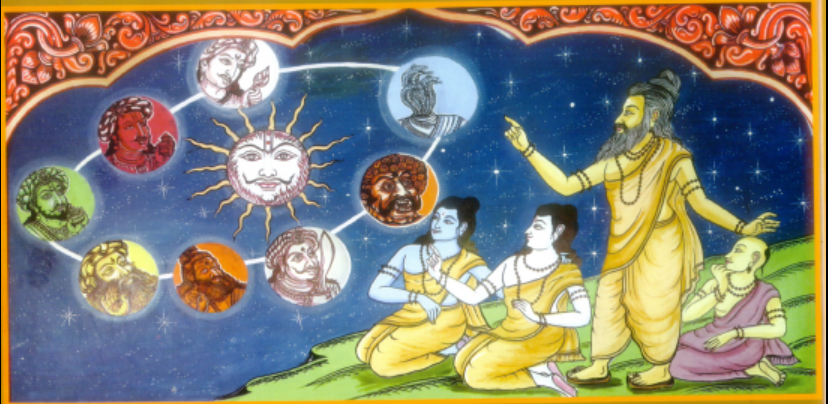Ancient Indian astronomy is a profound and intricate discipline that has left an indelible mark on the history of human understanding of the cosmos. Rooted in millennia-old texts and observations, Indian astronomers made remarkable contributions to the fields of mathematics, astrology, and celestial exploration. In this article, we delve into the fascinating world of ancient Indian astronomy and its enduring legacy.
- Vedic Foundations: The roots of Indian astronomy can be traced back to the Vedic period (1500–500 BCE), where early texts like the Vedas mentioned celestial objects and their significance. Ancient Indians were keen observers of the night sky, connecting celestial movements to religious rituals and earthly events.
- Aryabhata and the Siddhantas: One of the most prominent figures in ancient Indian astronomy was Aryabhata, who lived in the 5th century CE. His groundbreaking work, the “Aryabhatiya,” outlined principles of astronomy and mathematics. Aryabhata introduced the concept of a heliocentric solar system and accurately calculated the Earth’s circumference.
- The Siddhantas: Ancient Indian astronomers developed several Siddhantas (treatises) that explored the motions of celestial bodies. The “Surya Siddhanta,” for instance, provided calculations for solar eclipses and celestial positions. The “Brahma-sphuta-siddhanta” by Brahmagupta expanded on mathematical concepts and introduced zero as a numeral.
- Astrolabes and Instruments: To aid in their observations and calculations, Indian astronomers developed advanced instruments like the astrolabe and yasti-yantra (a type of sighting instrument). These tools allowed for precise measurements of celestial positions and the tracking of stars and planets.
- Influences Beyond Borders: The knowledge of Indian astronomy spread to neighboring regions like Greece, where it played a crucial role in the development of Hellenistic astronomy. The famous Greek astronomer Hipparchus is known to have incorporated Indian astronomical ideas into his work.
- Cultural and Spiritual Significance: Astronomy in ancient India was deeply intertwined with religion and culture. Celestial phenomena were considered auspicious or inauspicious, leading to the development of Vedic astrology (Jyotisha) for guidance in personal and societal matters.
- Modern Resurgence: While the scientific understanding of the cosmos has evolved significantly since ancient times, Indian astronomy continues to thrive. Institutions like the Indian Space Research Organisation (ISRO) have made significant contributions to modern space exploration, including missions to Mars and the moon.
Ancient Indian astronomy is a testament to the intellectual prowess of the people of the Indian subcontinent. Its contributions to our understanding of the cosmos, mathematical innovations, and the development of astronomical instruments have left an enduring legacy. Today, as India continues to make strides in space science and exploration, it pays homage to its ancient astronomers who gazed at the same celestial wonders and sought to unravel the mysteries of the universe.


